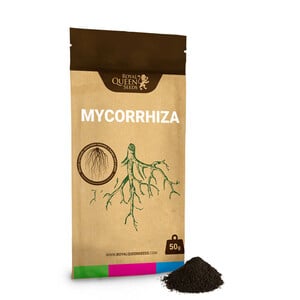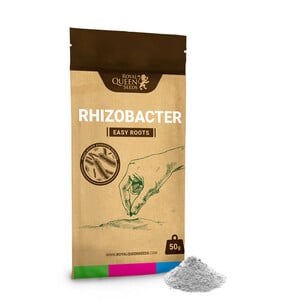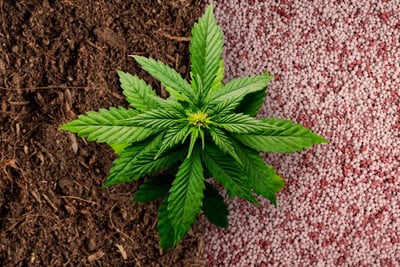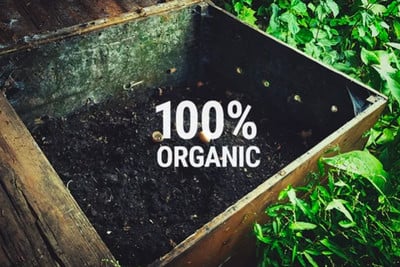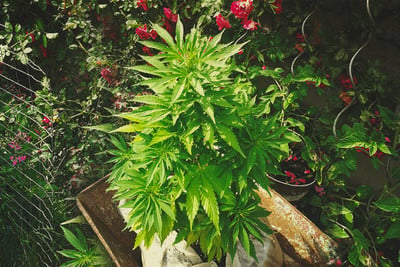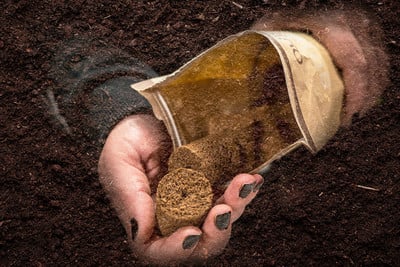.

How Mycorrhiza Fungi Can Make Your Cannabis Plants Prosper
When fungi and plant roots work together, mycorrhizae is formed. This formation increases the nutrient and water uptake for plants, protects them from disease and creates an optimum growing environment
Contents:
Fungi are a fascinating life form, fundamental to all life on Earth. An interesting fact to many: Fungi are a totally independent kingdom of life, separate to that of animals and plants. However they are genetically closer to animals than plants. Fungi play a vital role in the ecosystem by decomposing and breaking down dead organisms and biological byproducts, liberating the nutrients from within these sources which are then utilised elsewhere in the network of life. Fungi form a symbiotic partnership with some plants and algae and are actually responsible for the very survival of numerous species. Fungi grow in threaded structures known as hyphae, which, due to their massive surface area, allow for maximum nutrient absorption.
The cannabis connection: how mycorrhizae can improve plant health
This function of fungi can be taken advantage of and used by growers to maximise the nutrient uptake of their plants. But how exactly does this relationship work? The key word here is "mycorrhizae".
Mycorrhizae is a symbiotic alliance constructed of both a fungus and the roots of a plant. This mutualistic association is found throughout nature and is a fundamental part of soil life. By forming this relationship, the fungi and plants in question receive impressive benefits from one another, especially important when attempting to maximise the quality and quantity of marijuana yields.

The fungi receives constant access to the sweet bounty of carbohydrate sugars such as glucose and sucrose which are synthesised within the plant's leaves, transported to the root system and across to its fungal sidekick. In exchange, the plant then reaps the benefit of the fungi's superior abilities of absorbing water and nutrients from the soil in which they reside. This is due to the far larger surface area of the hyphae which are much finer than plant roots, making them much more effective at mineral extraction.
The fungi present can also make it easier for plants to access key building blocks such as phosphorous and nitrogen whichare paramount to optimal plant health, yieldsize and quality.
The formation of mycorrhizae also extends past nutrient uptake. This phenomena can also protect your plants against numerous threats that many growers face. Mycorrhizae plants show increased resistance to pathogenic microbial diseases that occur within soil. They are also better equipped at combating drought conditions that may occur, and are better at handling salt stress. They are also more resistant to certain toxicities that may occur in soils such as those with high metal concentrations.
Cultivating This Special Relationship
Growers have several methods at their disposal when it comes to introducing beneficial fungi into the soil. First, they can opt to attract mycorrhizal species found in their plants’ immediate environment. These species exist in most soils, so cultivators can easily attract them from nearby and boost their numbers by feeding them the right food.
Mycorrhizal fungi thrive on organic matter such as compost and other microorganisms, but also jump at the chance for some sugary sweetness. After all, sugars derived from photosynthesis are the main reason they hook up with plants in the first place.
To attract beneficial fungi from nearby, simply add carbohydrate sources such as fruit juice or maple syrup into the soil. Combine 10ml of sugars with one gallon of water and drench your beds and containers.
Alternatively, head out to a nearby forest and capture a fungal colony with your bare hands. Remove some soil from a woodland free of chemical contamination and pollution, and place it into a bucket. Once home, inoculate your growing medium with this microbe-rich goodness.
Finally, you can also use specially designed products to inoculate your soil. For example, Royal Queen Seeds Easy Roots contains a completely organic blend of Glomeromycota fungi that swiftly bind to roots and begin shuttling in nutrients in return for plant sugars.
Bacteria Bring Brilliant Benefits
Fungi aren’t the only microbes to populate the soil. Healthy, living soil also features a food web abundant with bacteria. Although they usually have negative connotations, many species of bacteria actually team up with cannabis plants, helping them to remain healthy and strong.
Sure, plenty of bad bacteria also exist in the soil. However, healthy populations of good bacteria help to keep these detrimental types at bay.
Easily introduce good bacteria into your soil using Royal Queen Seeds Easy Roots Rhizobacter. The blend contains two species of bacteria—Bacillus subtilis and Pseudomonas flavescens—that form a symbiotic relationship with plant roots. These minute life forms help to promote plant growth by fixing nitrogen, increasing nutrient solubilisation, and protecting against bad bacteria.
Easy Roots Rhizobacter also includes a special form of algae known as Lithothamium. This algae protects the bacteria from fertiliser and pH irritation, and also contains vital trace nutrients required for optimal plant health.
Mycorrhizae vs Rhizobacteria: How Do They Compare?
Mycorrhizal fungi and beneficial bacteria both play a critical role in the soil food network. Species from both categories decompose organic matter and make locked-up nutrients available to plant roots.
Mycorrhizal fungi physically fuse to the root system and become an extension of the network, exuding enzymes into their immediate environments, breaking down complex molecules, and carrying free nutrients into the roots. In return, plants pay a currency of sugar created through photosynthesis.
Cannabis plants also thrive with beneficial bacteria close to their roots. They tempt these miniature critters with a cocktail of sugars; in return, rhizobacteria wages war against potentially harmful bacteria, and even helps plants uptake atmospheric nitrogen—one of the most important nutrients for plant health and development.


























